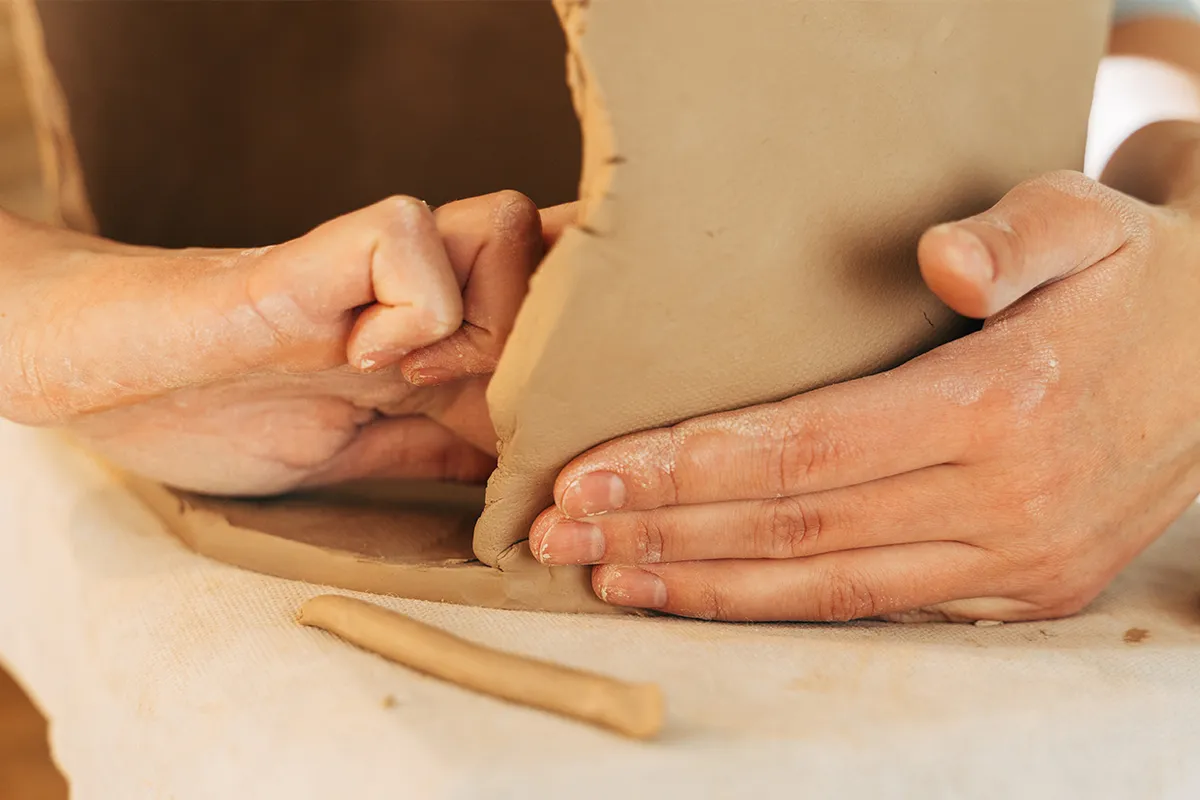Pottery is an ancient art form that has captured the hearts and minds of people throughout history.
For many, pottery is like magic or creative alchemy. You take a lump of clay and – using your bare hands and a workbench or a pottery wheel – you can make something completely unique.
Whether you are hand-building a vase or throwing cups, bowls or plates on the pottery wheel, there’s nothing quite like the feeling of playing with clay.
If you’re new to pottery, you can gain a lot from attending one of the many pottery courses, classes, and workshops with talented ceramicists all over the country first.
But, if you’ve done that or you’re simply eager to find a pottery wheel for sale, you’re in the right place. Keep reading for tips, tricks, and handy advice. Oh and make sure you read our beginner's guide to pottery.
8 of the best pottery wheels to buy
Edited 02/01/25 to ensure pricing and product availability is up to date.
1. BriSunshine 350W Pottery Wheel
Best for beginners
SQUIRREL_TEXT_13079808

Perfect for budding artisans, the BriSunshine 350W Pottery Wheel has garnered commendable reviews on Amazon!
It offers a pocket-friendly option for those seeking quality without breaking the bank. While some critics mention its shorter stature, this can be overcome by placing it on a plinth for optimal comfort.
With a reasonable 25cm wheel head, adjustable turntable speed up to 300r/min, and reversible torque direction, this wheel offers an immersive and adaptable crafting experience.
Although it doesn't come with bat or offer a warranty, it's an easy to use machine at a fair price. It's perfect for beginners looking to hone their pottery prowess.
Pros: Inexpensive, reversible direction, removable splash pan
Cons: May be quite short, doesn't offer warranty
SQUIRREL_13079808
Check out our brand-new shop!
Looking for more inspirational projects? Head over to the Gathered shop where you can find a huge range of beautiful patterns by all your favourite yarn and needlework designers.

2. Skutt Prodigy
Best for power
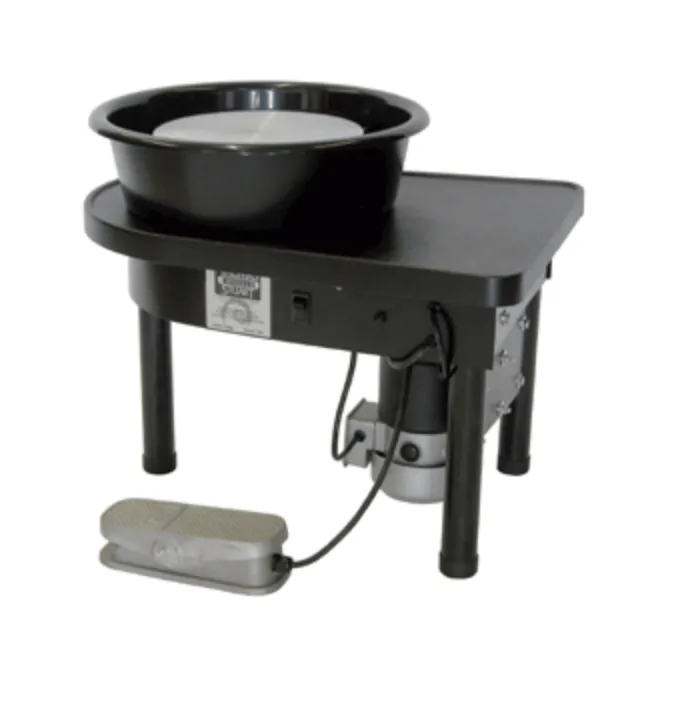
Designed for entry-level potters, the Skutt Prodigy is a great balance between price and power.
The 1/3 HP motor has been tested for endurance, the foot pedal is durable and well-designed too.
If you need to remove the wheel head and splash pan, simply twist and pull up.
Pros: Plenty of power, durable and well-designed.
Cons: You can't change the wheel's direction of rotation.
- Buy now in the US from Blick ($1,370.00)
3. Shimpo RK 55 Potters Wheel
Best for noise

If space or noise is an issue this belt-driven, lightweight wheel from Shimpo is a good shout
The two-piece splash pan makes for easy cleaning, while the reversible motor accommodates left or right-handed throwing.
Pros: Very quiet with a lightweight wheel, plus it won't take up much room.
Cons: Not great if you're working with heavier weights of clay. You can only control the wheel speed using a foot pedal.
- Buy now in the UK from The Clay Cellar (£850), Dryad (£899), Pottery Crafts (£933.33)
4. Rohde HMT600 Pottery Wheel
Best for comfortability
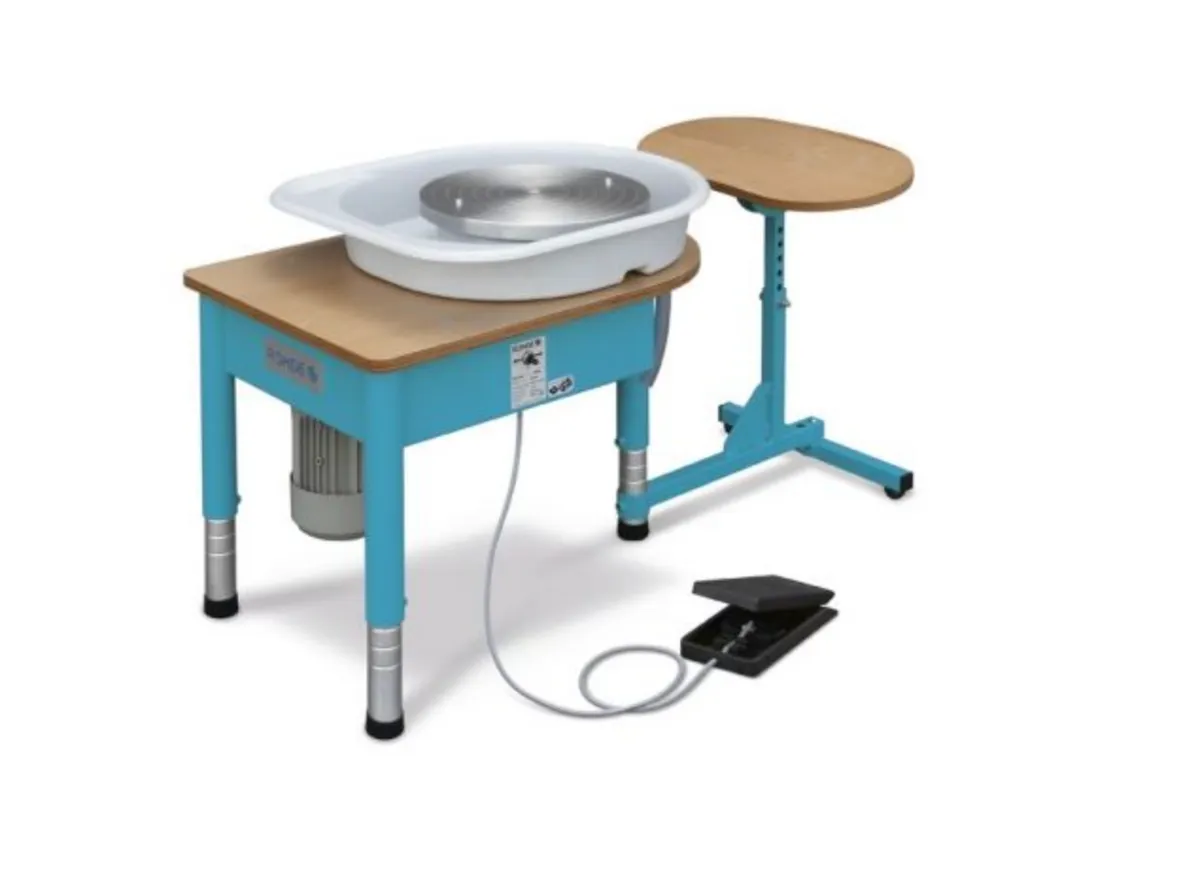
The Rohde HMT600 is an absolute beauty. Built for the workshop, this potter’s wheel has the power for everyday use.
We also love that it’s quiet, reversible, and has a large, easy to remove splash pan. Its ergonomic design means you’re sure to be throwing in comfort too.
Pros: Quiet and reversible, with a comfortable ergonomic design.
Cons: No significant issues.
- Buy now in Europe from Bath Potters (£1,874.40)
- Buy now in the US from Hot Clay ($2,197.00)
Decorate your pots with creative designs
Once you've thrown your pots, the next step is to decorate them. Find inspiration in our pottery painting ideas round-up!
5. Shimpo RK-5T table top wheel
Best for small spaces

In the market for a lightweight, compact and affordable pottery wheel?
Take a look at the Shimpo RK-5T. Weighing in at just 12kg, this table top wheel can still handle large amounts of clay – up to 9kg, to be exact.
Pros: Lightweight, compact and affordable. It can handle large weights of clay too!
Cons: None to speak of, this is a reliable potter's wheel.
- Buy now in the UK and US with hand lever from Potclays (£764)
- Buy now in the UK with foot pedal from Potclays (£850.74) (available in the US too)
6. Gladstone Special Needs Wheel
Best for accessibility
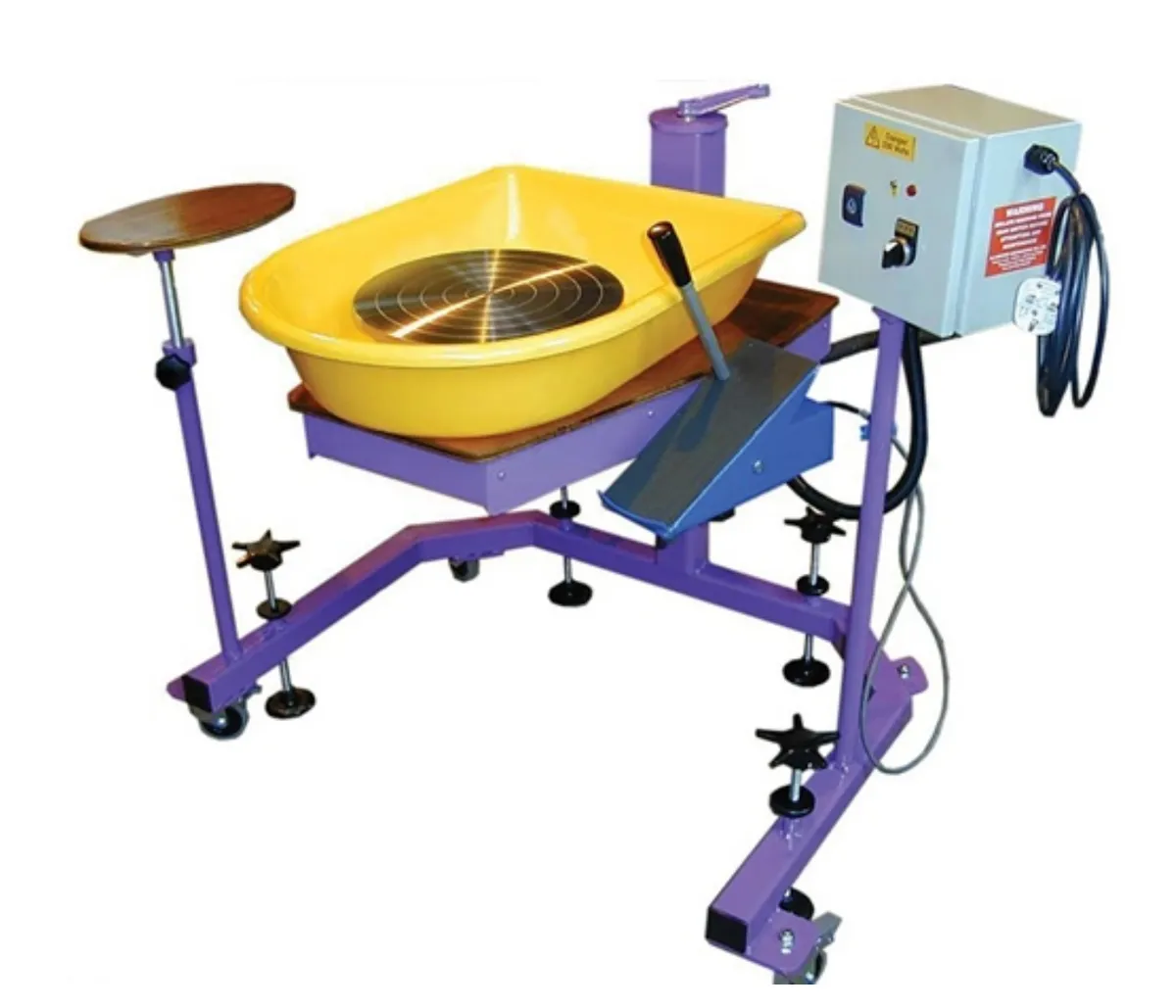
If accessibility is on your mind, the Scarva Special Needs Wheel is a great bit of kit.
While the splash tray and wheel head are standard size, the height of it all is completely adjustable to suit you and other users.
The legs are wider to enable you to put a chair or wheelchair in place. Meanwhile, lockable castors enable it to be moved and stored easily.
Pros: Easy to adjust to suit the user's needs.
Cons: No real cons – this is a great wheel which makes pottery more accessible.
- Buy now in the UK from Scarva (£4,740.00)
8. Airgoo pottery wheel
Best for design
SQUIRREL_TEXT_13079806
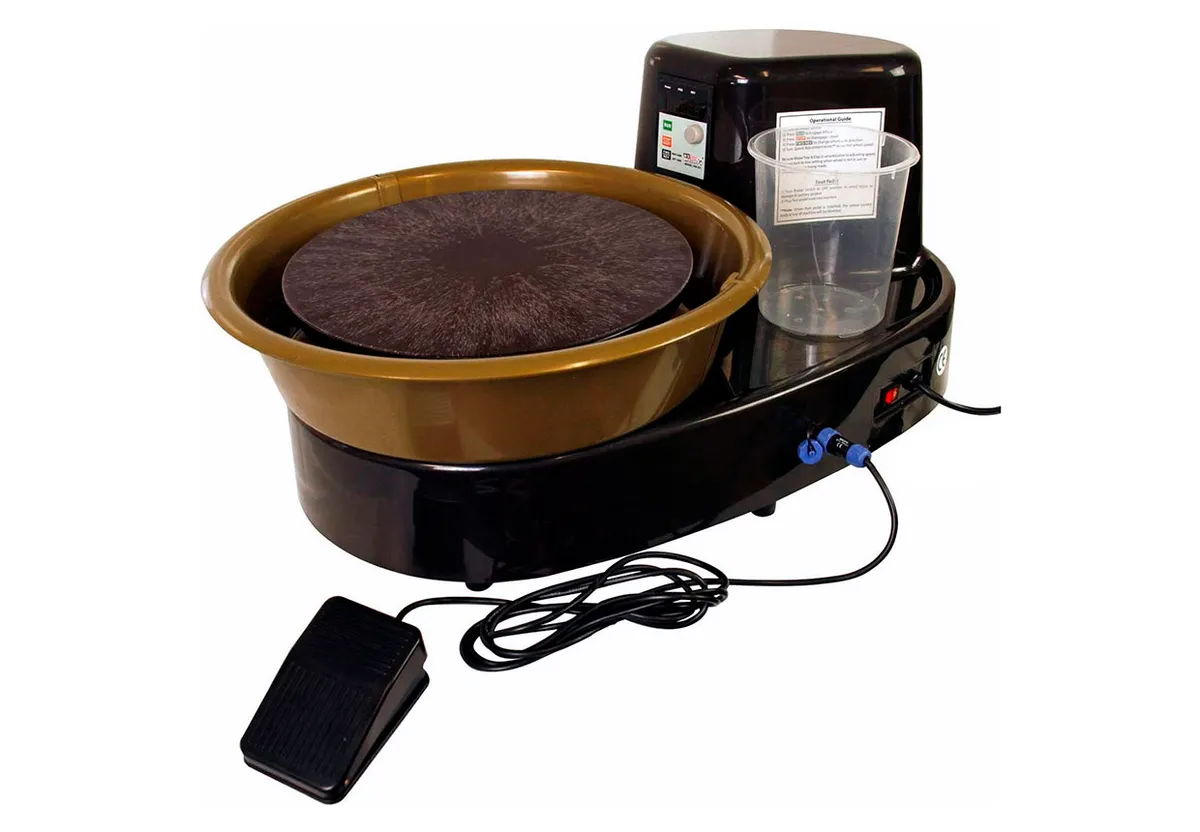
Amazon has started to sell an increasing number of pottery wheels, including this one by Airgoo.
This wheel can handle a lot of clay – up to 11.3kg – so it's a good option for beginners or potters who want a backup wheel.
It's got a powerful motor that packs a punch (1/3 hp motor), as well as a 29cm wheel head.
There's an LCD display, which allows you to track your speed. You can easily control the rotation using the foot pedal and it can reach a maximum speed of 300 RPM (revolutions per minute).
Pros: A sturdy potter's wheel which can cope with large weights of clay.
Cons: Assembling the plastic drip tray can be tricky.
SQUIRREL_13079806
9. National Geographic pottery wheel
Best for price
SQUIRREL_TEXT_13079804
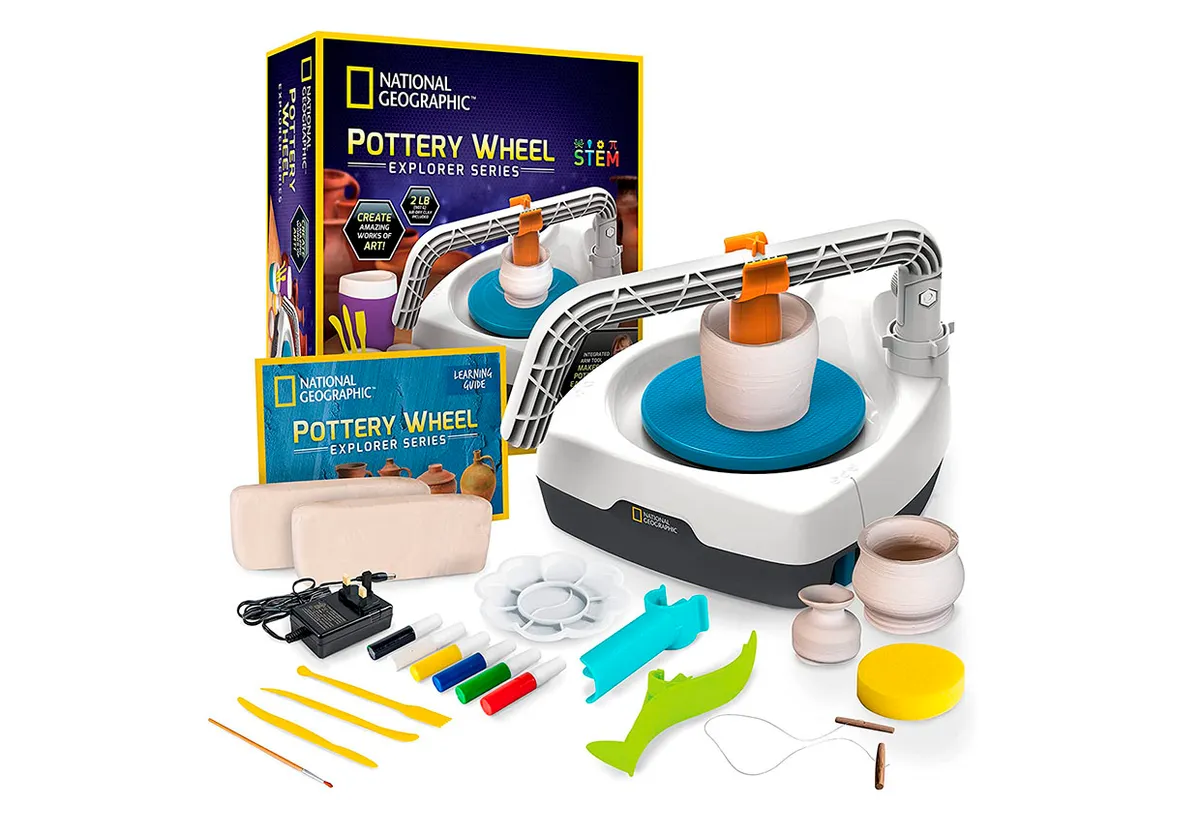
Why should grown-ups have all the fun? This smart little pottery wheel is a brilliant way to introduce kids to pottery without having to splash out on an expensive piece of kit.
It's surprisingly powerful for its size and includes an integrated arm to make it easier to centre and shape your pots.
This set is excellent quality for the price and comes with air dry clay, paints and an assortment of tools. If you run out of clay or paints, they can be replaced easily.
Pros: A good-quality pottery wheel for kids and beginners to use.
Cons: If your child loves this wheel, you'll have to buy them a real one!
SQUIRREL_13079804
What is a pottery wheel?
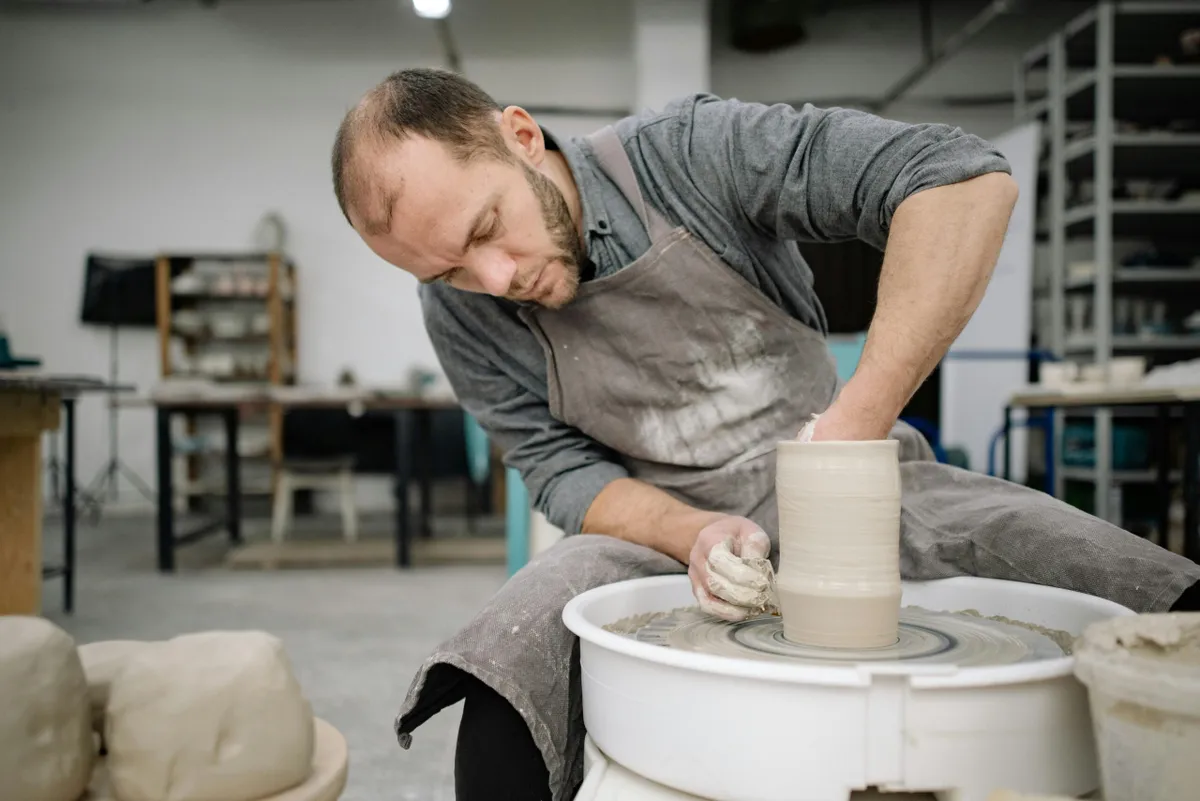
A pottery wheel is a fast-moving turntable used to shape clay into round vessels, pots and decorative objects. You can buy electric pottery wheels or manual ones in a range of sizes and styles.
Manual pottery wheels, also known as kick wheels or treadle wheels, rely on flywheels and momentum rather than electrical power to operate.
Kick pottery wheels
Kick wheels are a traditional pottery wheel design that features a large flywheel at the bottom that you can push with your foot. They are great if you need to throw pottery without relying on a power source.
Treadle pottery wheels
Treadle wheels, such as the Leach treadle wheel, are also operated using your legs and feet. The difference between a kick wheel and a treadle wheel is the treadle.
Much like on an old sewing machine, the treadle – or lever –works in harmony with a crankshaft to power the fly wheel and is said to offer the capacity for smoother running.

Electric pottery wheels
Electric pottery wheels are powered by – you guessed it – electricity via a foot pedal and buttons or a control panel.
Designs vary depending on whether you’re buying new or second-hand, so some will come with an attached seat, others with accompanying stools to sit on.
Since throwing pottery is a messy business, most of them will have a plastic or wooden splash pan too.
Clay
The best clay to use on a pottery wheel is a bag of potter’s clay rather than the air dry stuff. If you’re just starting out, try earthenware or stoneware clay.
The difference between the two is that earthenware is fired at a lower temperature, so remains porous and therefore cannot go in the dishwasher. Stoneware clay is fired at a high temperature so is food safe (depending on the glaze you choose) and non-porous.

How to use a pottery wheel
Pottery wheels are surprisingly difficult to get the hang of. Ultimately the goal is to get the clay on the wheel, centre it, keep it centred and make something from it.
Start with a bag of stoneware or earthenware pottery clay, a clay cutting wire, a set of scales, and a wooden table or workbench. Now it’s time to wedge and weigh your clay.
Wedging is preparing the clay for use, kneading it in a specific way to remove air pockets and any unwanted elements before putting it on the potter’s wheel.
Whether you choose the spiral or bull’s head wedging method, there is a bit of an art to them both and this stage requires practice. Check out YouTube for some great videos showcasing both techniques.
Next up, it’s time to weigh out each ball. The weight for each ball of clay will vary depending on what you are making – if you’re not sure, aim for 1lb or 2lb balls to start with and go up or down from there.
You’re almost ready to start throwing! Grab a large bowl of water, your sponge, throwing tools and your potter’s apron because it’s time to switch your wheel on and centre your clay.
The centring process is essentially like wedging but on the wheel, giving you the opportunity to gradually get your clay into position so your vessel can begin to take shape. The master potter Florian Gadsby has a fantastic video guiding you through this process.
To centre the clay involves slamming the ball down in the middle of the wheel head when it’s stationary. Then, once you’ve pressed the foot pedal down, get it to a high speed and use your wet hands on the clay to secure it in the centre before ‘coning up’. Body posture and hand positioning is very important throughout to ensure it doesn’t fly off.
How much is a pottery wheel?
Pottery wheel prices vary from around £50 for complete projects (not for the fainthearted!) through to £500-£1,900 for a good quality second-hand model. Ebay and Facebook Marketplace is a great start, as is the private Facebook group Pottery Equipment For Sale & Wanted. Brands to look out for include Potterycrafts Alsager / Podmore & Sons, Shimpo, Cromartie and JW Ratcliffe And Sons.
When you’re buying anything with a motor second-hand, if you’re not mechanically minded, it’s worth taking someone along who is to check it over before buying. Ask whether it turns clockwise or anticlockwise, have a go on it if you can and observe it as it runs at different speeds.

It might sound obvious, but it’s also important to check the dimensions to ensure you can get it through the door at home.
Most pottery wheels can be taken apart and put back together again, but – speaking from experience – it’s a hassle you can do without. Decent gloves and a sack truck will also make your life a lot easier.
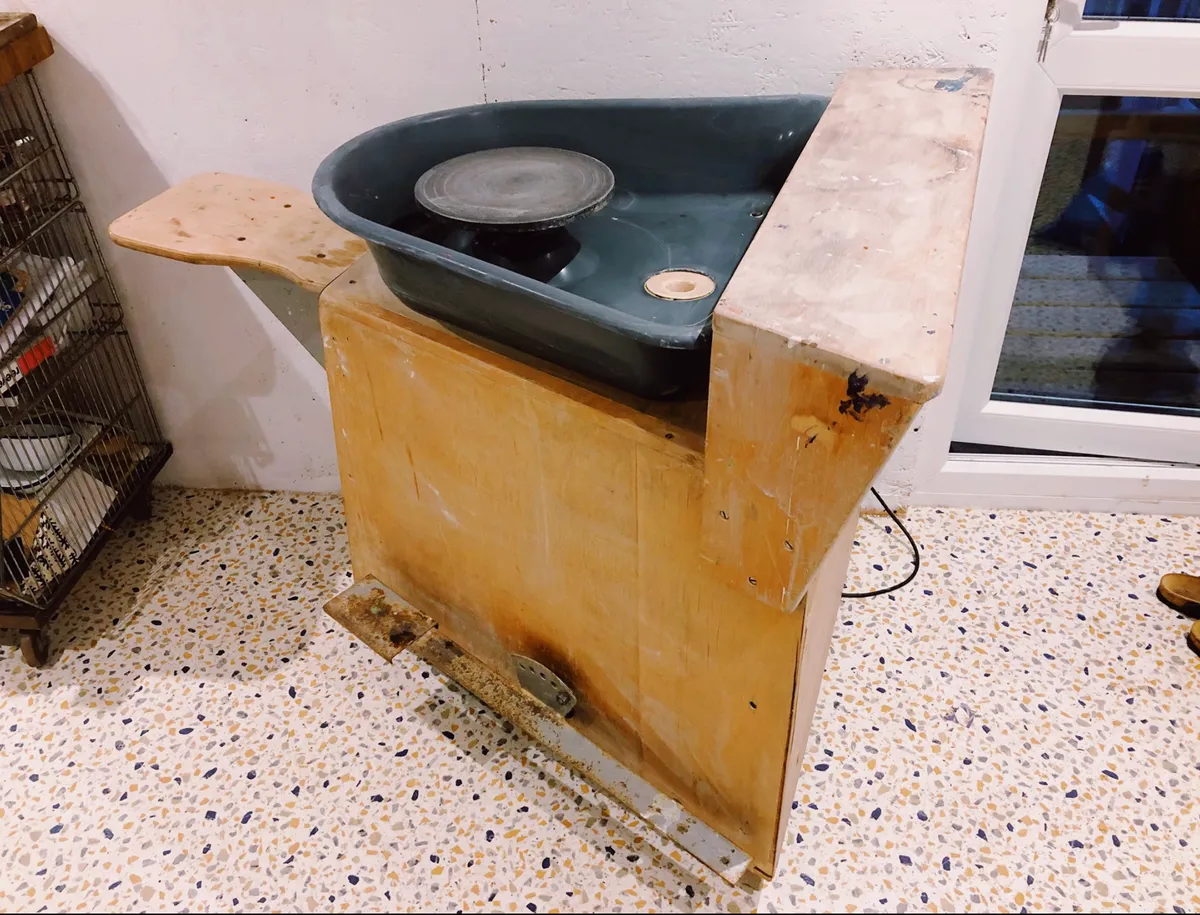
New electric pottery wheels cost anywhere between £850 to over £2,000 depending on the make and model. Shimpo, Skutt, Cowley, Rohde, Discus, Brent, and Gladstone are just some of the many great brands to look out for.
Physical and online retailers such as Bath Potters, Scarva, Clayman Supplies, PotteryCrafts and Potclays are all incredibly helpful when it comes to questions, advice and aftercare. Amazon stock entry-level pottery wheels online too.
Ultimately, whatever style or brand of pottery wheel you decide to settle on, Hartley and Noble can produce throwing batt systems to fit most wheel heads with or without batt pins.
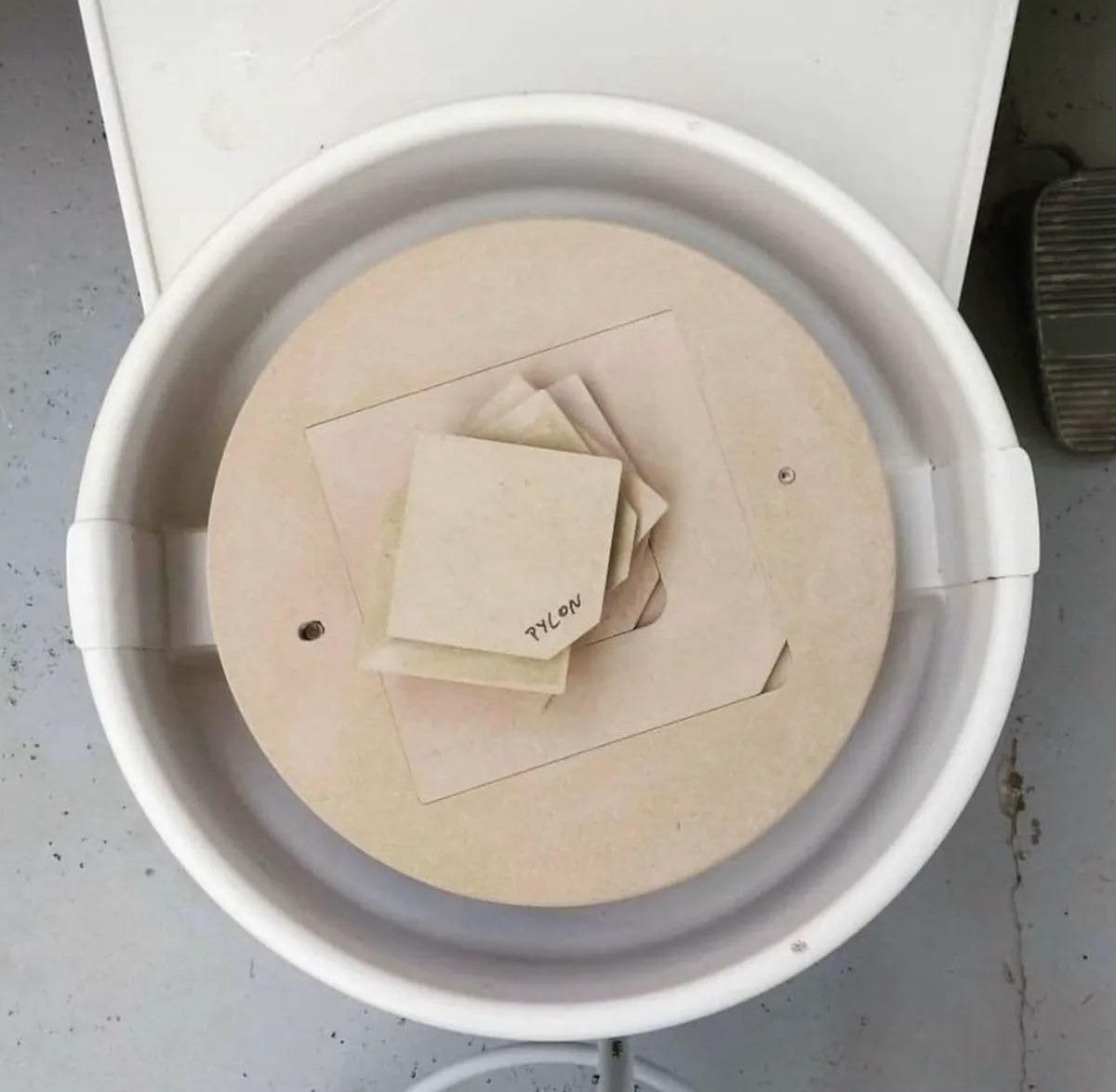
Why trust Gathered?
When it comes to selecting the best pottery wheels, trust is paramount. That's why Gathered has collaborated with Sarah Gane, a seasoned freelance writer, skilled potter, and small-business owner, to curate this comprehensive list.
Operating from her cosy pottery studio, Sarah creates functional wares and decorative pieces that reflect her dedication to craftsmanship and attention to detail. With over a decade of experience as an independent writer and brand storyteller, Sarah brings a wealth of expertise to the table.
By trusting Gathered's pottery wheel recommendations, you're not just relying on expertise – you're tapping into Sarah's passion, knowledge, and first-hand experience.
Choose the best pottery wheel for your needs
Every potter has different needs, but fortunately, there's a wheel out there for everyone!
Whether you're looking for your first potter's wheel or searching for an upgrade, we've got plenty of options to suit your budget.
From making elegant vases to shaping practical cups, there's nothing quite like working with ceramics!
Buying a potter's wheel to use at home can make the whole experience more enjoyable – and you'll get so much more out of your pottery sessions.
Get into slab pottery
You don't require a wheel to make slab pottery, but that doesn't mean that it's any less challenging! You can use slab pottery to make incredible sculptural pieces.
Try it for yourself with Gathered's slab pottery guide.
